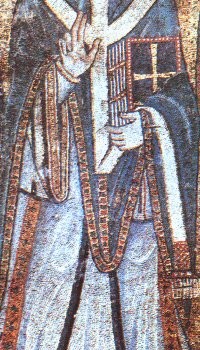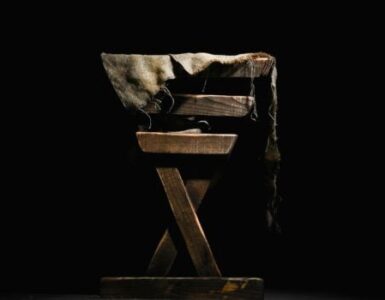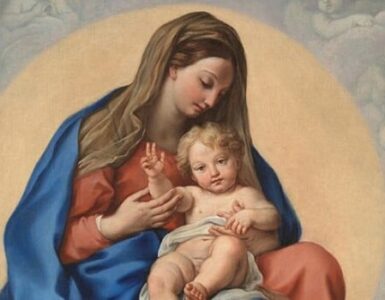In the year 337, Julius succeeded Pope Saint Mark, who had only reigned as pope for nine months. Immediately after taking office, Julius was involved with the Arian controversy. Anthanasius had been exiled. But after the death of Constantine the Great, his son, Constantine II, allowed Anthanasius to return to the see of Alexandria. Eusebius of Nicomedia was against the return of Anthanasius so he and his followers elected George for the see of Alexandria. However, the Arians in Egypt wanted another man, named Pistus, to be bishop. They pleaded with Julius to bring Pistus into communion with Rome.
A great controversy ensued and finally Julius assembled a synod in Rome so both parties could present their cases for his decision. Neither party attended though, so in a letter to the Eusebian bishops, Julian declared Athanasius the rightful bishop of Alexandria and reinstated him. This decision, however, was not finally confirmed until the Council of Sardica in 343.
Julius died on April 12, 352 and was buried in the catacombs of Calepodius on the Aurelian Way. Very soon after his death he was honored as a saint.
Lessons
During his pontificate, Julius had two new basilicas built: the Church of Julius, which is now St. Maria Church in Trastevere, and the Basilica Julia, which is now the Church of the Twelve Apostles. He also built three other churches, one of which was at the tomb of the martyr, St. Valentine. While Julius was in office observance of saints’ feast days started and the Roman feast calendar of Philocalus began.
Prayer
Heavenly Father, we thank you for the discernment and wisdom you gave Pope St. Julius during his papacy. We thank you for Pope Benedict XVI and ask that you continue to bless him with the Gifts of the Holy Spirit. In Christ’s Name we pray. Amen.
Other Saints We Remember Today
St. Sabbos the Goth (372), Priest, Martyr












